“A leading Upcountry S.C. merchant.”
City Directories and History: 1908 – Arnold Friedheim, 1922/23 – A. Friedheim, and Julius Friedheim
The Rock Hill Herald reported on Oct. 28, 1886 – “On Jan. 1st 1887, Julius Friedheim will leave the firm of A. Friedheim and Brothers.”
On Jan. 21, 1886 the Yorkville Enquirer reported – “The ice on Mr. Friedheim’s Pond was between 3-4 inches thick last week, and the young people had a pleasant time skating. The pond was full of users each day with skaters and even late into the evening.”
On Jan. 6, 1887 the RH Herald reported – In a sketch of Rock Hill attractions it included Friedheim’s Pond which is describes as – “A pretty resort for parties in the summer. Attractions include: fishing, fountain, boats, and walks.”
On Aug. 18, 1887 the Herald reported – “A blue crane, measuring 6 ft 8 inches across the wing span was killed at Friedheim’s Park last Monday.”
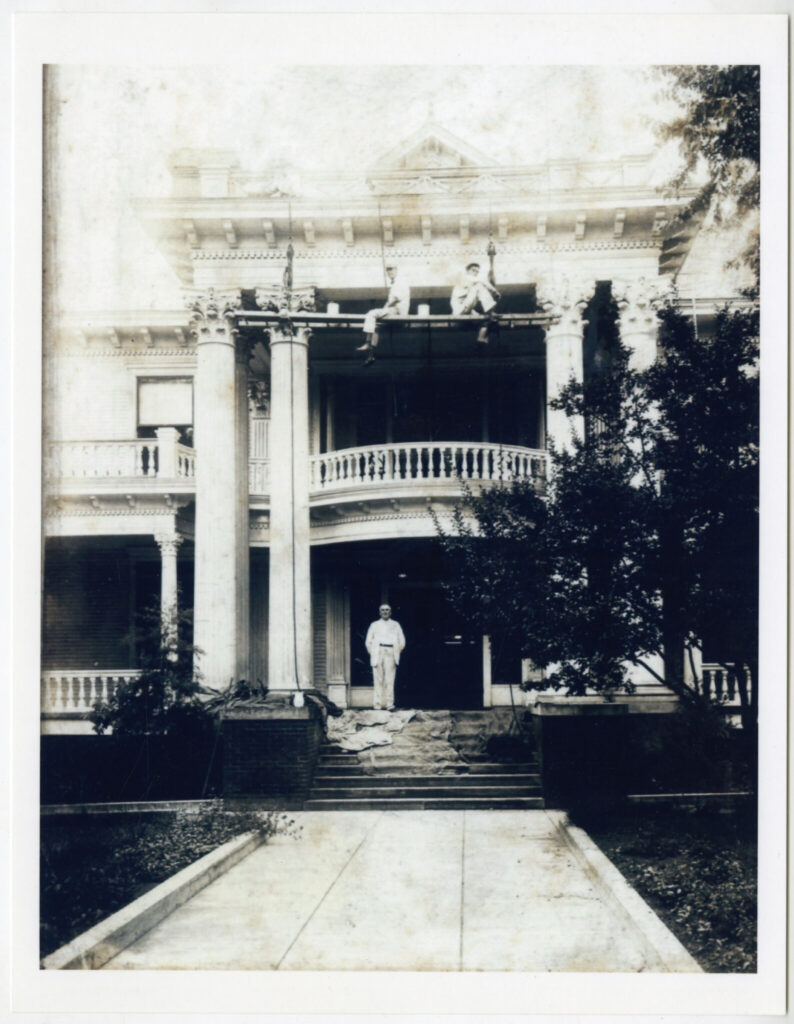
Friedheim Home, built in ca. 1906 Courtesy of the WU Pettus Archives – 2024
YORK RANGERS – War clouds were gathering in little Rock Hill, far-removed from most of the issues that were dividing the country, all of which leads to this question: Who is the York District area was orchestrating the rattling of sabers and the beating of drums? The rank-and-file people of York District had no zeal for secession or for killing their Northern neighbors. And, too, there was a large, strong group of York people who actively opposed Negro slavery, witness the anti-slavery ministry of William Cummins Davis of Yorkville and his fellow members of the Independent Presbyterian Church. An examination of an account of the meeting to organize The York Rangers reveals that it was the leaders of the planter class who took charge of affairs: Col. Cadwallader Jones of “Mount Gallant,” Maurice A. Moore of Yorkville, the attorney Allen Robertson, Col. Edward Avery of Ebenezerville, Newton A. Steele, George Eli McDuffie Steele, Daniel Williams, and Capt. E. R. Mills. (Correspondence via Wm. B. White, Jr., to WBF 2007)
The Friedheim home once stood on East Main Street where the current (2013) Rock Hill Municipal Parking lot is located next to First Presbyterian Church. Encompassing an entire city block, the house was a highly impressive structure constructed in circa 1909 and replaced the E.R. Mills home which had originally been constructed on the lot shortly after the Civil War. The new Friedheim home was designed and constructed by Julian S. Starr of Rock Hill who was actively working as a builder and architect from 1902-1931. In 1908, though he was not trained as an architect he began referring to himself as one. Perhaps his finest building was the Union High School, now 2014 the S.C. University Extension at Union.
The McElwee Store ledger of 1915-16 states that Arnold Friedheim who lived at this address and was a neighbor of Mr. Jno. McElwee also had an account at his store.
Arnold Friedheim, a young corporal in Lee’s Army with an enviable war record, came to found his store-Rock Hill’s oldest business establishment in continuous operation. Beginning with little or nothing, by his industry and integrity he built up a large business which still leads in its field. His descendants are numerous and. among our most useful citizens. The home he later built on Main Street was one of the town’s largest residences, being called “The White Palace.” It was sold to the city in the spring of 1953, and razed in July of the same year. (Information from: The City Without Cobwebs – Douglas S. Brown, 1953)
The Rock Hill Herald reported April 24, 1884 – “The Friedheim Brothers let the water out of their pond last week and found in it 188 fine German carp. They will place a fence around the pond and restock it.”
The Herald reported on Sept. 18, 1884 – “Friedheim’s Pond is a popular spot with the young people. Many a match will be made under the shade of the old oaks and the magnificent springs.”
The Herald reported on July 2, 1885 – “Friedheim’s Park continues to grow in popularity and crowds of strollers can be seen there every afternoon. The pure waters of the spring are enjoyed by all. It is the most attractive place in Rock Hill.” On July 16th the paper added – “A new boat, the work of Overcash and Flowers has been launched on the pond in Friedheim’s Park.”
The Herald reported on Oct. 6, 1887 – “Mr. Overcash is now occupying part of the home of Mrs. William Roach.”
On June 3, 1886 – “At Friedheim Park, has added a large cage, divided into three section. One has a number of rabbits, the second has squires and guinea pigs, and the third is for birds, which have not yet arrived. This provides children with a new amusement. The community owes a great debt to the brothers Friedheim for their support of the park.”
From the Rock Hill Herald, April 7, 1969: Friedheim’s Pond
A small piece of Rock Hill’s history is due for oblivion as the city moves toward its future. It is a small, clear-flowing spring remaining from the last century and stubbornly refusing to give up, although clogged by debris and almost choked by undergrowth.At one time many years ago, it was the center of neighborhood activity, for it fed a pond where children swam and was the center of a small park where deer drank and was nestled in a sing- house where women of the neighborhood cooled their earthen crocks of butter and milk. “My father took me there many times when I was a small boy,” said J. Y. Scruggs, retired city engineer. “It was such a nice place and it was called Friedheim’s Pond.” Julius Friedheim, said Scruggs as he reminisced over the childhood playground of several score years ago, owned hundreds of acres in the western section of the city, including the present route of Wilson Street. But here was no such street in those days, said Scruggs. “It was all wooded, with huge oak trees. The grass was kept mowed and there was a white picket fence around a sort of small park where he kept several deer.”
“Friedheim built a dam about 100 feet beyond (north of) where Wilson is now and the flow of that spring formed what everyone called Friedheim’s Pond.” The earthen dam was broken by a freshet about forty years ago, but parts of it remain today, topped by large oaks, which themselves have been past the sapling stage for many years. But the spring remains, although almost buried under an accumulation of years of debris and neglect. It still flows steadily from its source between Wilson and the Southern Railway embankment and on the bank above it looms an ancient sycamore, which is also a holdover from the last century. Its truck is still solid and sturdy and its age shows only in its size. The land is now owned by the City Housing Authority.
The land itself is in a tract being developed for a recent housing project, while on the other side of Wilson Street, where the spring’s creek still flows, the land is under development for still another housing project. The spring could be cleaned and its course tiled and it could be kept as a stream through the landscaped sections of the two projects.

Birdseye view of East Main Street. The home on the right (full image of), was the Cobb home. The roof at the bottom of the image is the Mills – Friedheim home in 1895. Courtesy of the YC Library.
ARNOLD FRIEDHEIM – AN ARTICLE BY PAUL GETTYS AND JOHN MISKELLEY
This article is a summary of information compiled in a booklet published in 1999 on the reopening of the Friedheim Building. John Miskelley and Paul Gettys worked together to develop the publication, which was printed by Main Street Properties. The building now houses the Wells Fargo Bank.
In the aftermath of the Civil War, Rock Hill was one of a number of small railroad towns in the Carolina Piedmont. Its emergence as the largest city in the central Piedmont was due to a number of energetic leaders working hard to create a New South community. One of these was Arnold Friedheim, a German immigrant and Confederate veteran who settled in Rock Hill in 1866. Friedheim had worked in men’s clothing prior to the war in Baltimore and Salisbury, N.C., and within a few months of
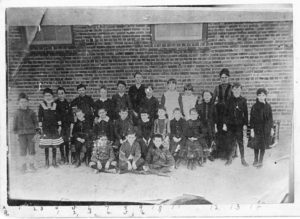
A young Dolph Friedheim is marked as # 2 in Row C. This images is the ca. 1886 Rock Hill Graded School – Courtesy of the York County Library.
coming to Rock Hill, he opened a small shop on Main Street. The business grew, and Arnold moved to a larger building in 1869. Two of his brothers, Julius and August, came to work in the business, and another brother, Louis was a veterinarian. Arnold met a young lady on a buying trip to Baltimore, and in 1870, married Miss Sophie Stengel, settling into a home on Caldwell Street.
The Yorkville Enquirer reported on March 30, 1892 – “A. Friedheim and Bro., are extending the enclosure around their park.”
The Yorkville Enquirer of Sept. 13, 1893 took an item from the RH News which stated, “on the north side of the CC&A Railroad track, near its southern entrance into town, behind some cottages occupied by African Americans, is the private park of Mr. Julius Friedheim. It is familiarly known as the “Pond.” It has a little lake in the center with several varieties of fish, neatly kept walks, and a green sward, of grass with five deer.” *** This is possibly the source of the current name for Pond Street, found nearby this location.
The Herald reported on Sept. 9, 1896 – “Samuel Friedheim has returned from the North where he has been buying goods for his store at Landsford.”
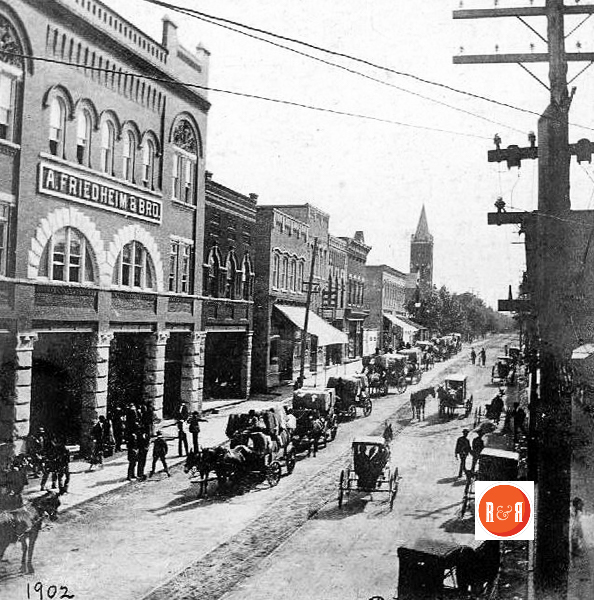
Downtown Rock Hill, S.C. showing the A. Friedheim and Bro. Store in 1902. Courtesy of the White Family Collection – 2008
On April 2, 1898, a fire destroyed most of the buildings on the north side of Main Street, including Friedheim’s. The stock of goods valued at $50,000 was lost. Within two days, the Friedheim store was operating in a storage building, and construction was started within two months on a new mercantile palace like no other ever seen in Rock Hill. The brick and stone structure had a basement and three full floors of selling space. The visitor was struck immediately by the large atrium in the middle of the store, which allowed natural light from skylights to flood the entire space. The merchandise ranged from clothes for the entire family to shoes to groceries and hardware. The third floor had buggies, harnesses, and furniture, which were lifted on a large freight elevator.
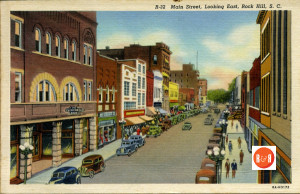
Friedheim’s Dept. Store on Main Street was one of Rock Hill’s oldest and most successful businesses. Courtesy of the Turner Postcard Collection – 2012
The Friedheim family members became leading figures in the social, cultural, and business life of Rock Hill. In 1909, Arnold and Sophie built a showplace classical revival home on East Main Street which became known as the “White Palace.” It occupied the entire block bounded by Main, Saluda, Black, and Elizabeth Lane.
From humble beginnings, the Friedheim family built one of Rock Hill’s greatest mercantile traditions and the largest store in town. Friedheim’s lasted for 98 years, closing in 1964 after the death of Albert Friedheim, one of Arnold’s sons. The building was restored in the late 1990s by D. L. Rogers Construction Company and became home to First Union (now Wachovia) and other offices.
The Rock Hill Record reported on March 29, 1909 – “Plans have been drawn and accepted for a handsome home for the Freidheim family on their lot on East Main Street where their former home stood until destroyed by fire. The work will be done under the supervision of Dr. Louis Freidheim. The plans were drawn by Mr. Julian Starr.”
The Record reported April 12, 1923, on a car accident at the corner of East Black and Saluda Streets, last Tuesday, April 10th. Between a car driven by Ms. Alethia Fennell and one by Haywood Dunlap. Malcolm Kendrick, riding with young Dunlap was cut and scratched on the face. This is a very bad corner, the high fence around the back premises of the Friedheim cutting off the view. There have been several accidents at this corner.
The Herald reported on June 29, 1931 on the funeral of Mr. Julius Friedheim, – “the service was held at the residence on East Main Street and was conducted by Rabbi Fred Hirsch and the Rev. F.W. Gregg of First Presbyterian Church.”
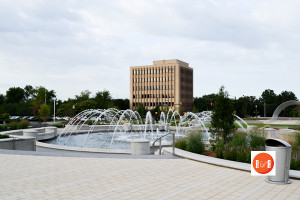
Fountain Park – 2015, the original location of the Mills & Friedheim homes.
The SC Architects: 185-1935, Wells and Dalton – 1992 attributed the Arnold Friedheim home constructed in 1909 to Julian S. Starr, architect.
Click on the More Information > link found below the picture column for additional data on the Friedheim-Marshall-Albright families of Rock Hill, S.C. Click on Laurelwood Cemetery Tours for his gravesite.
Click HOME to return to the numbered site tour of Rock Hill’s downtown.
Stay Connected
Explore history, houses, and stories across S.C. Your membership provides you with updates on regional topics, information on historic research, preservation, and monthly feature articles. But remember R&R wants to hear from you and assist in preserving your own family genealogy and memorabilia.
Visit the Southern Queries – Forum to receive assistance in answering questions, discuss genealogy, and enjoy exploring preservation topics with other members. Also listed are several history and genealogical researchers for hire.
User comments welcome — post at the bottom of this page.
Please enjoy this structure and all those listed in Roots and Recall. But remember each is private property. So view them from a distance or from a public area such as the sidewalk or public road.
Do you have information to share and preserve? Family, school, church, or other older photos and stories are welcome. Send them digitally through the “Share Your Story” link, so they too might be posted on Roots and Recall.
User comments always welcome - please post at the bottom of this page.
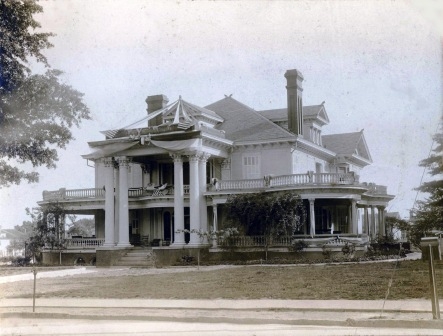
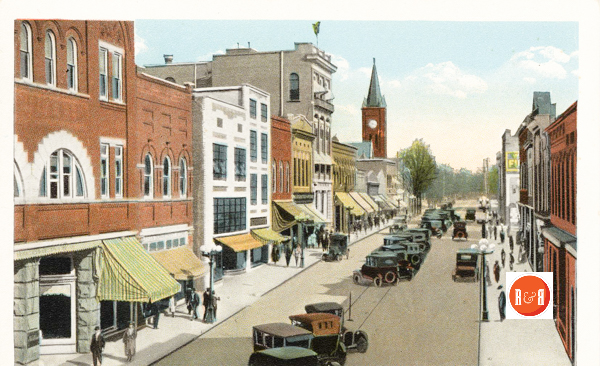
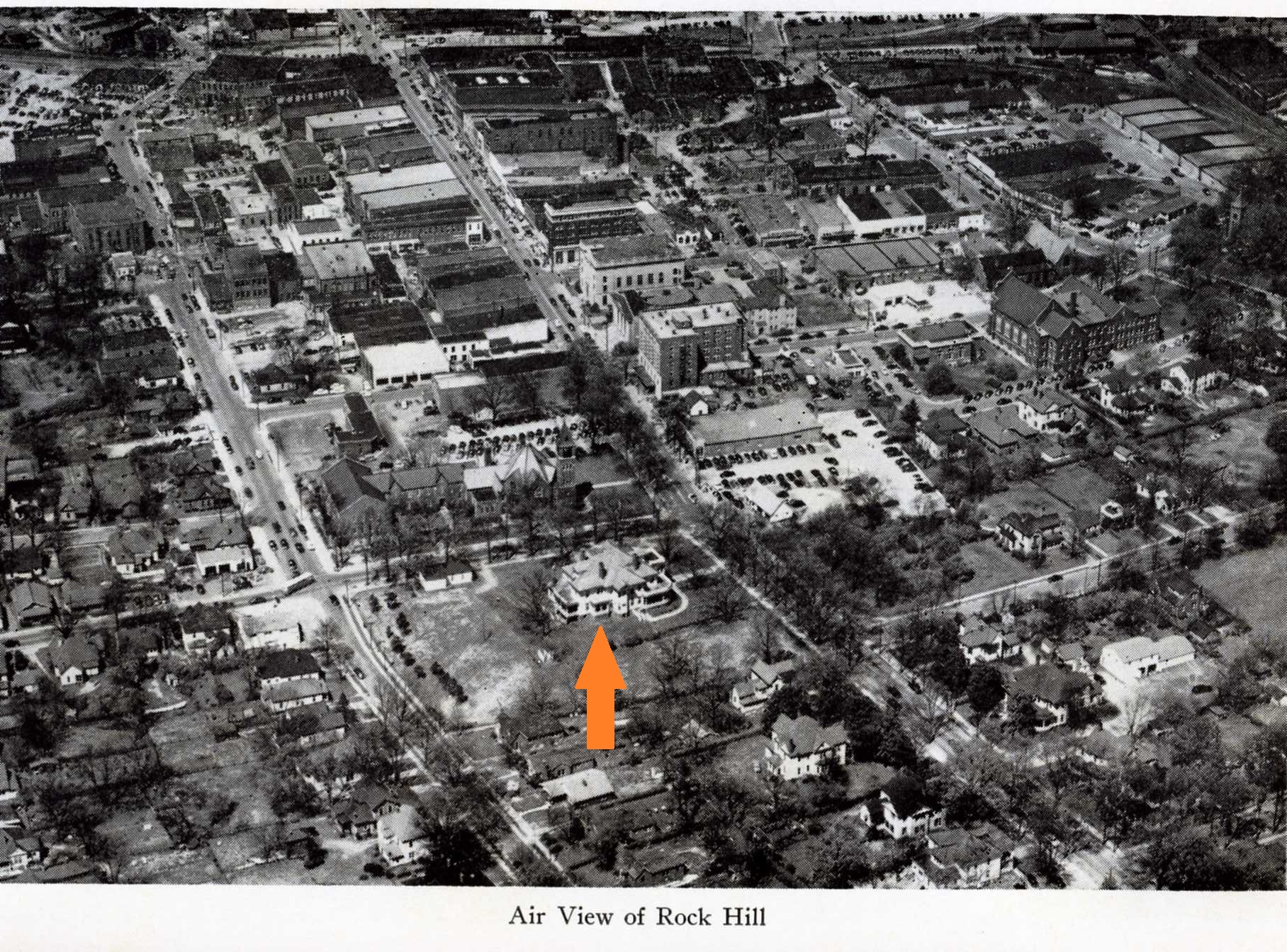
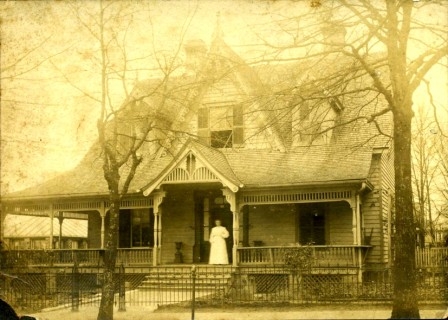
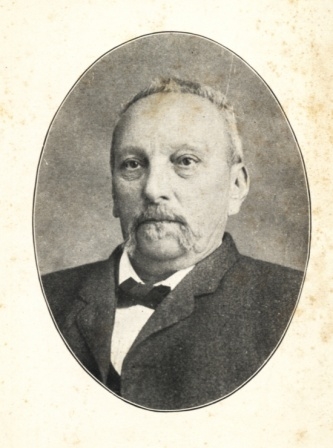
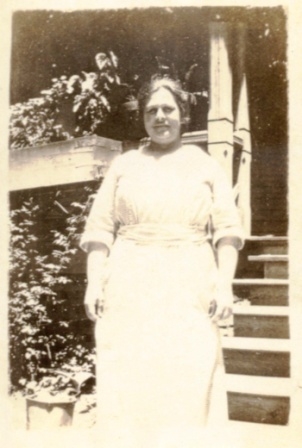
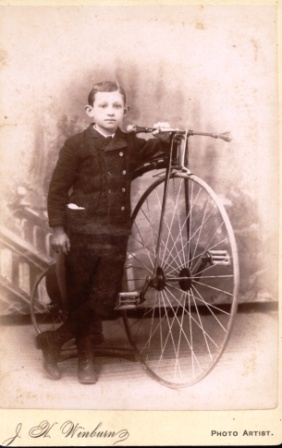
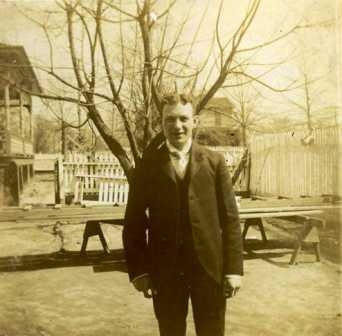
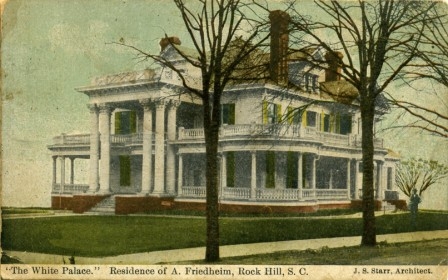
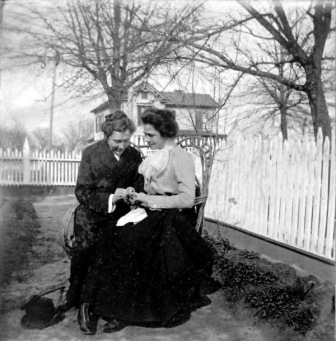
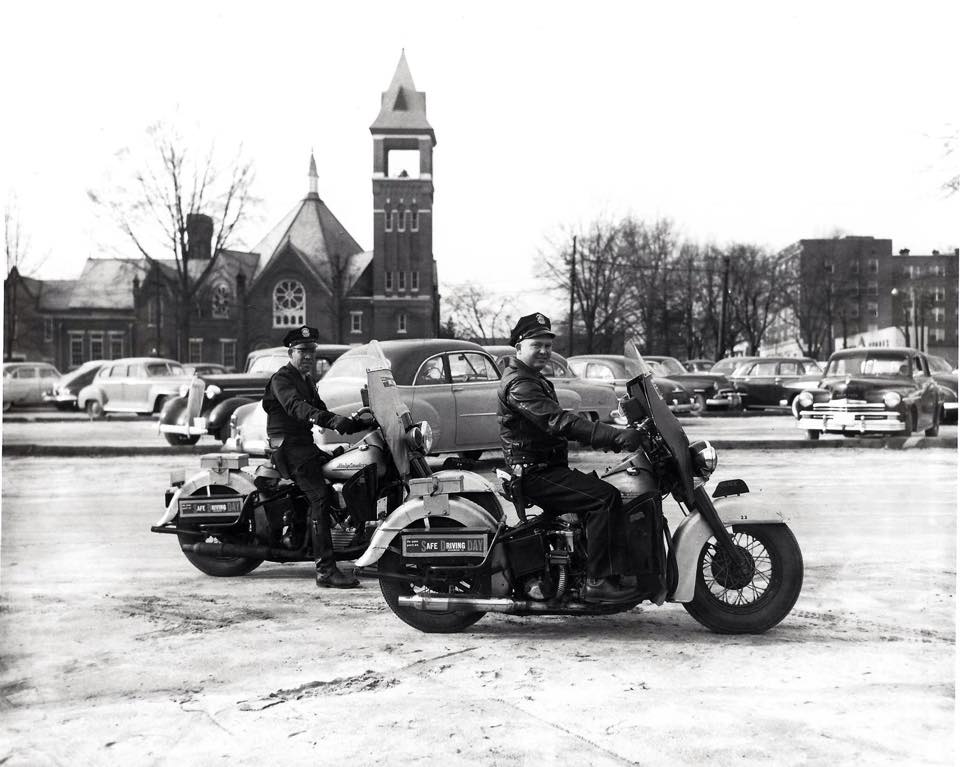
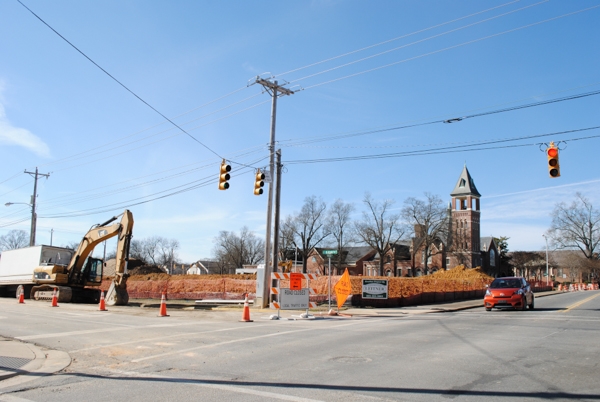
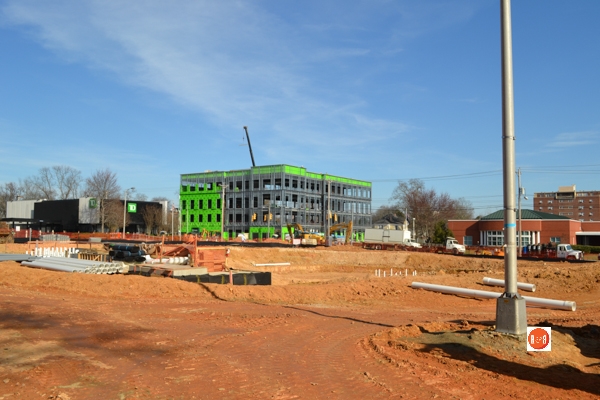
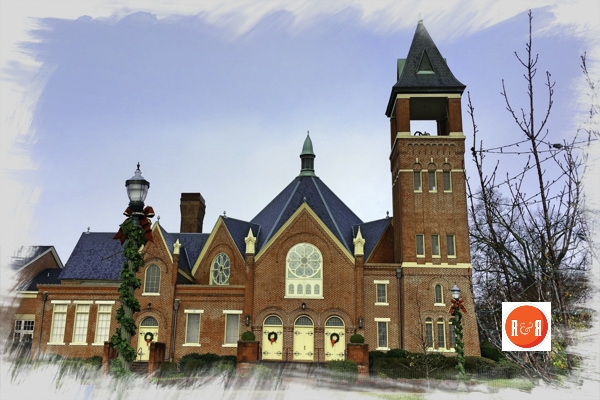
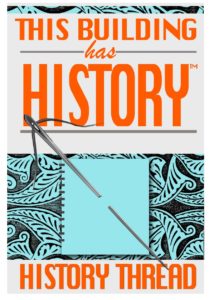


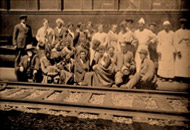
Share Your Comments & Feedback: